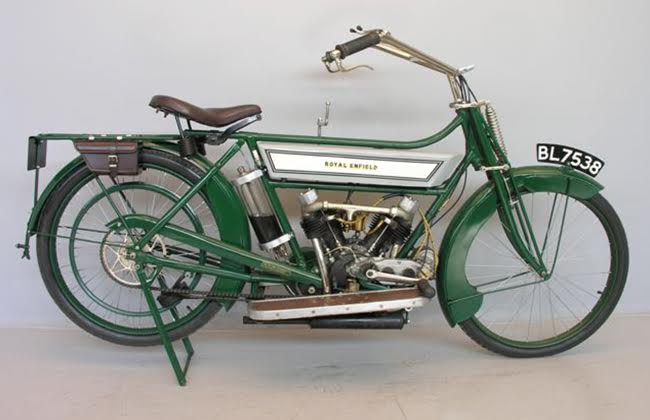Legacy to be continued: Royal Enfield and its role during World Wars
Modified On Oct 30, 2018 By Gajraj Singh Bhati
- 2849 Views
Founded in 1893, Royal Enfield is a name known to almost every second person, in fact, the legacy of Enfield is quite popular. With the passage of time, the company has made a significant impact and has marked its footsteps with every other production. From Bullet to its newly launched Continental GT, Royal Enfield has given a lot to the motorcycling industry. And besides offering bikes, the world is a fan of, the company has maintained ‘trust’ among its consumers and fans. It seems like manufacturing powerful and muscular machines an easy task for this automobile giant and with a change in time, Enfield has also improved its portfolio and produced a lot of different bikes. Whether it's styling, power, looks or technology, the company is growing at a full pace. At the same time, it has also managed to maintain the same ‘feeling’ about all its machines throughout over the years. Though, We have been writing about Enfield’s every in and out from past few months, here is a feature where we will give you an insight on ‘Royal Enfield’s’ role in World Wars and how the company became a helpful source to commute at that time.
First World War
The First World War also known as WW1 was started on 28 July 1914 and lasted till 11 November 1918. During that time, a lot of machines were used to commute and they became very helpful at the time of emergencies. Royal Enfield supplied a lot of machines to the British War Department and also got a contract for the Imperial Russian government. The engines used by the company at that time were its own 225cc two-stroke single and a 425cc V-Twin engine. An 8 hp motorcycle was also produced by the company equipped with a sidecar that was fitted with a Vickers machine gun.
Inter-War span
Royal Enfield launched a four-stroke 350cc single engine using Prestwich industries and to cater to the requirement of time, the company came up with bulbous saddle tanks and centre-spring girder front forks and became one of the first companies to do so. Despite facing a loss in those years, Enfield kept going with its reserved models.
Second World War
The start of Second World War has been attributed to two different incidents during, some people believe onset of WW-II was on July 7, 1937 when the Marco Polo Bridge incident happened that led to a war between Japan and China. While there are people who believe the beginning of World War 2 happened when Germany invaded Poland, which forced Britain and France to declare war on Hitler’s Nazi state in retaliation.
The company was called upon by British Authorities during the Second World War and was asked produce motorcycles for the military. The models which were manufactured for the military were WD/C 350 cc side valve, WD/CO 350 cc OHV, WD/D 250cc SV, WD/G 350 cc OHV and WD/L 570 cc SV. The auto giant also had a machine which was popularly known as the ‘Flying Flea’, it was a 125cc machine that was designed specially to be dropped by a parachute with troops.
An Underground Factory
An interesting thing that we found during research is that the company also had an ‘underground factory’ in 1942. The staff was transferred to work there and the setup was done in Bradford-on-Avon, Wiltshire. The company didn’t only dealt with motorcycles, but it also manufactured some of the ultimate machines to be used during wars. Royal Enfield manufactured ‘predictors’ for anti-craft gunnery.
